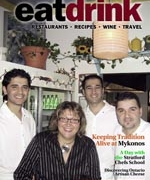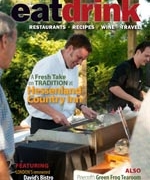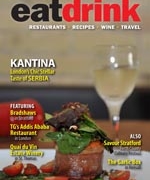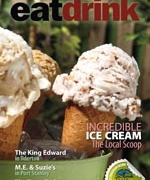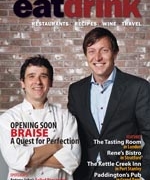The Food Connection
In no book has the phrase “You are what you eat” meant as much as in Michael Pollan’s The Omnivore’s Dilemma: A Natural History of Four Meals. This book needs no further accolades after receiving numerous awards in 2007, including the prestigious James Beard Award and a nod as one of The New York Times 10 Best Books of the Year. With all this formal recognition behind it, the book can accomplish what it set out to do: educate the masses about how the elements of a meal get to our plates. Combining science, philosophy, anthropology, and journalistic investigation, Pollan sets out to answer the question “What should we have for dinner?” Since humans are omnivores, it becomes far more complicated than need be; thus, the dilemma. He writes, “When you can eat just about anything nature has to offer, deciding what you should eat will inevitably stir anxiety.” Later, he concludes, “We’ve discovered that an abundance of food does not render the omnivore’s dilemma obsolete. To the contrary, abundance seems only to deepen it, giving us all sorts of new problems and things to worry about” (7). He tries to assuage our dilemma by inspiring a conscientious approach to meals by remembering that food comes from somewhere other than the supermarket or refrigerator.
We far too often disassociate food from its source, but every cow, chicken, pig, or fish that could become our dinner is “connected as all animals must be to certain other animals and plants and microbes, as well as to the earth and the sun. He’s a link in a food chain, a thread in a far-reaching web of ecological relationships” (81). It matters not where that animal comes from; it could be any of three environs Pollan investigates in pursuit of the origins of his meals: industrial feedlot, organic pasture, or in the wild.
First delving into the world of industrial farming, Pollan explores feedlots, food processing plants, and all entities involved in manufacturing corn which is used for myriad products in grocery markets, not to mention it is the staple for cattle feed to fatten up the world’s supply of beef. This portion of his investigation ends up with a dining experiment at McDonald’s (not nearly as extreme as the Super-Size Me movie) which leaves him thinking that it’s hard to picture an actual cow involved in a fast-food hamburger. Fast food gives us the option of overlooking ethical concerns or nutritional dangers that could arise. Pollan surmises this is “what the industrial food chain does best: obscure the histories of the foods it produces by processing them to such an extent that they appear as pure products of culture rather than nature.”
His second and third meals explore the roots of alternative farming and he concludes that the term organic has become a government-owned, food-processing strategy. A working holiday at Polyface Farm in Virginia, however, emphasizes that sustainable farming – including grass-fed livestock, seasonal food calendars, local farmers’ markets, and open-air slaughterhouses – is a far more natural and ecological process that recognizes the connection between the health of soil, plants, animals, and humans.
Pollan’s fourth meal puts him in the role of predator, as he obtains a hunting licence, picks up a gun, and heads into the forest. Of course, an internal animal rights battle ensues, but he eventually kills a wild boar and, along with mushrooms foraged from the wild, and vegetables from a home-grown garden, prepares a meal that consists entirely of elements from nature. This, for him, with no artificial ingredients, becomes the perfect meal, both for its taste and conscientious satisfaction. It is with this contentment, after throwing light on all forms of eating between the two ends of the fast-food and slow-food spectrum, that Pollan reveals that morals, ethics, and cultural habits really do make us what we eat.

